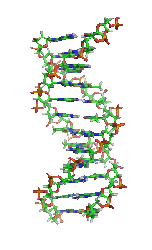Stem cells taken from ALS patients may have the same capacity to develop into mature neuron-like cells as those collected from healthy donors, according to a new study released this month in STEM CELLS Translational Medicine. These findings could open doors to a possible new treatment option while also reducing the chance for rejection and other side effects often seen when someone other than the patient is the cell donor.
Durham, NC (PRWEB) February 08, 2013
Amyotrophic lateral sclerosis (ALS), or Lou Gehrigs Disease, is a rapidly deteriorating neurological condition affecting five out of every 100,000 people worldwide, mainly after the age of 50. The average survival time is only three years.
While no effective treatment exists, preliminary studies suggest that the quality of life and even life expectancy itself could be improved in patients who receive stem cell infusions. However, questions remain about the capacity of these cells to take hold and turn into neurons.
The study involved stem cells that bear the surface antigen CD133+, which have been shown to have a very low association with creating cancers. These cells can be isolated from a wide range of sources including bone marrow, peripheral blood and umbilical cord. A group of researchers from the Tecnolgico de Monterrey School of Medicine, in Monterrey, Mexico, led by Hector Martinez, M.D., Ph.D., Maria Teresa Gonzlez-Garza, Ph.D., and Jorge Moreno Cuevas, M.D., Ph.D., recently reported on the effects of CD133+ stem cells taken from peripheral blood of affected patients and transplanted into their own brains.
In this earlier trial, we provide evidence of a positive clinical response in ALS patients treated with auto-transplantation of CD133+ cells into the frontal motor cortex. However, there was an important question remaining to be answered: Were CD133+ cells obtained from ALS patients capable of transforming into neural cells? The present study demonstrated in a convincing manner the promise of CD133+ cells obtained from affected individual with ALS to transform into cells with neural potential, Dr. Martinez said.
The team collected CD133+ cells from 13 patients diagnosed with ALS and then grew the cells in the lab for a period lasting up to 48 hours. At the end of the two days, they saw an increase in neuronal proteins. This suggested that the stem cells were in the early stages of becoming neurons. Furthermore, the expression of some specific genes within the same time period indicated that the fate towards motor neurons, the neurons being destroyed in Lou Gehrigs patients, was underway.
No correlation was found between age, sex or ALS functional scale and the CD133+ stem cells response to the neuro-induction medium, Dr. Gonzlez-Garza said. Therefore, we concluded that CD133+ stem cells from ALS patients are capable of differentiating into pre-neuron cells, as well as the stem cells from healthy subjects.
These new findings provide the scientific basis for the positive clinical observations in patients with ALS treated by autotransplantation with CD133+ cells in the frontal cortex. But more importantly, they also give credence to the field of stem cell transplantation in other potentially fatal neurodegenerative conditions, Dr. Cuevas added.
This study may help explain the positive clinical outcomes obtained by stem cell transplantation in ALS patients and suggest the potential of stem cell therapy for conditions such as stroke and Parkinsons disease, said Anthony Atala, M.D., Editor of STEM CELLS Translational Medicine and director of the Wake Forest Institute for Regenerative Medicine.
See more here:
ALS Patients’ Own Stem Cells Show Promise as a Future Treatment Option
